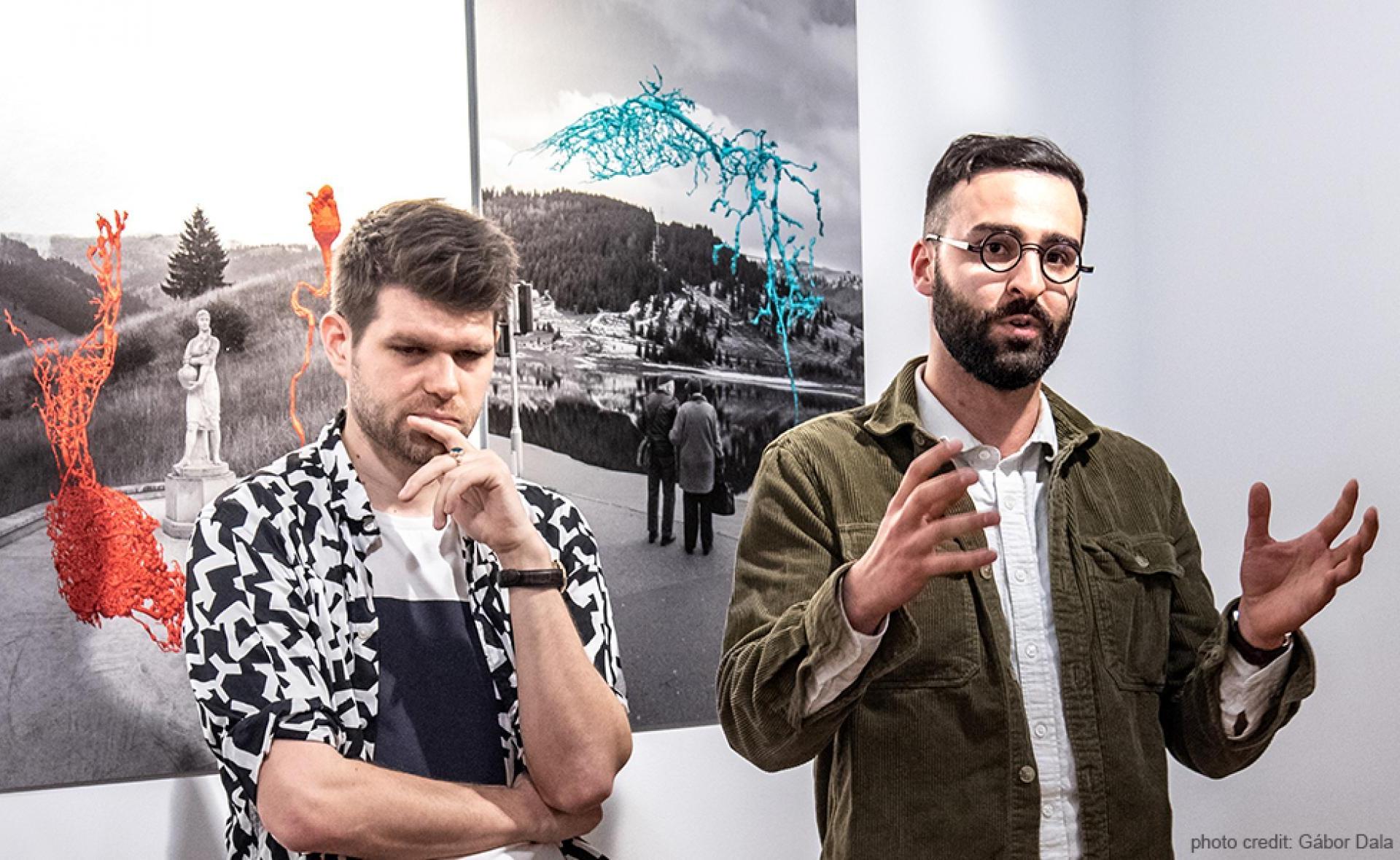10 Treurenberg, 1000 Brussels

This one-of-a-kind exhibit features the thought-provoking combination of the works of Hungarian-American neuroscientist Dániel Barabási and Hungarian photo artist Balázs Csizik.
The exhibition is organized around the concept of life and its different dimensions. The two artists combine the tools of science and fine art to present the central theme through a variety of media, from cellular organisation to networks of urban spacesmand communities.
The joint exhibition of Dániel Barabási and Balázs Csizik synthesizes the different dimensions of the interpretation and observation of life. Barabási is a neuroscientist who studies the cellular organization and developmental processes of living systems, the human body and the brain. As a visual artist, Csizik works primarily in photography, capturing and manipulating natural, urban and social phenomena using a specific formal language based on the aesthetics of constructivism.
At the exhibition opening you can experience the Mezzocielo Performance - between music, visual arts and neurosience
What goes through your mind while you play? This is the question that inspired pianist and performer Matteo Bevilacqua in creating MEZZOCIELO, an experience where the musician’s mind generates images. As he plays classical and contemporary works on the piano, Matteo wears an EEG neural headset that records his brain activity. Advanced software translates these signals into visual art, creating a synergy of mind, music, and image: drawing while playing becomes reality.
Matteo Bevilacqua
Artist in Residence at the Queen Elisabeth Music Chapel in Brussels, Matteo Bevilacqua is one of the most versatile and intriguing pianists on the international scene. He records for Naxos Recordings and performs across Europe in over 100 concerts, spanning solo recitals, chamber music, and orchestral engagements. His performances have debuted in Italy’s most prestigious venues, including Milan’s Teatro Menotti, Rome’s Palazzo delle Esposizioni, and the Festival Castel dei Mondi in Andria. His recordings are reviewed by international magazines (Gramophone) and broadcast on national radio (Rai Radio Tre). He is the winner of the "Concerti a Teatro" prize from Fondazione Carispezia and the "Palma d’Oro" competition in Finale Ligure.
The performance is supported by the Queen Elisabeth Music Chapel and is organized within the framework of the Belgian Club of Hungarian Scientists.
Dániel Barabási is an Eric and Wendy Schmidt postdoctoral fellow at the Broad Institute of MIT and Harvard, whose work blends neuroscience, network science, and machine learning. He received his B.S. in Physics from the University of Notre Dame in 2017, where he worked on network models of brain connectivity, and was awarded a PhD in Biophysics from Harvard in 2023. Dániel's research illuminates the intricate relationship between brain connectivity and gene expression. His developmental results imply that the brain is not a complex entity molded solely by experience, but is a fundamentally simple self-assembling system, governed by genetic processes during embryonic development.
Balázs Csizik obtained his master’s degree in Visual Communication (Budapest University of Technology and Economics) where he’s a lecturer now, in the fields of visual communication and communication technology. He combines the visual language of photography with other fine art forms, using different skillsets. His artistic vision is inspired by modern experimental architecture and art forms like suprematism and constructivism.
The common feature of his series is reduction, minimalism, which appears in colors, composition and visuals at the same time. This kind of reductivity also involves some distance, resignation in relation of the urban appearance displayed. In one of his series, he turns to the local phenomenon of post-socialist visual culture from a global viewpoint. In his works he uses custom made materials, like plywood objects and textile elements with organic surfaces of natural substrates. The main visual is based on the handmade artificial world and the interplay between nature and built elements. This is accompanied by the duality of digital and analogue technical solutions within his art. In his series he experiments with the relations between rough urban elements and nature – he also experiments how he can change the weight and form of the different kind of urban materials with the use of natural elements to give new feelings about the inhuman and brutal materials like concrete.
Balázs Csizik is represented by the Ani Molnár Gallery.
